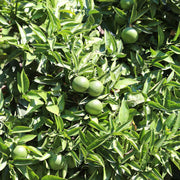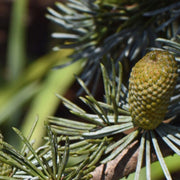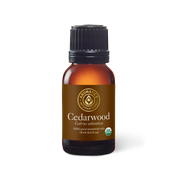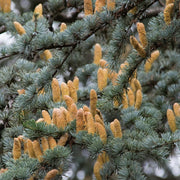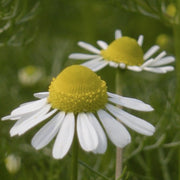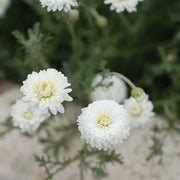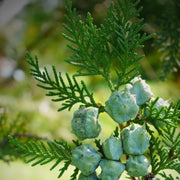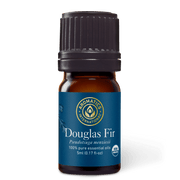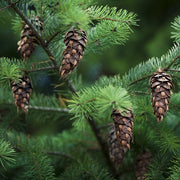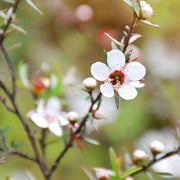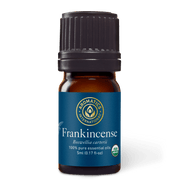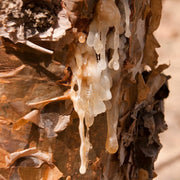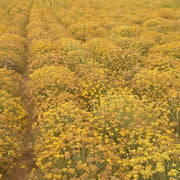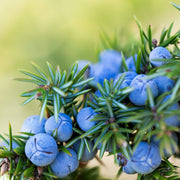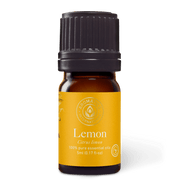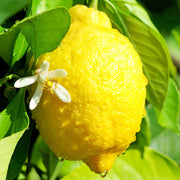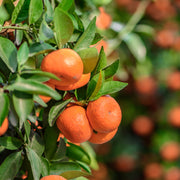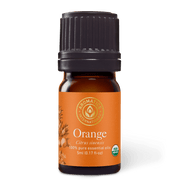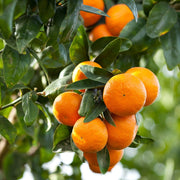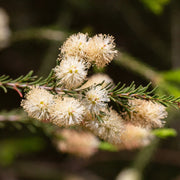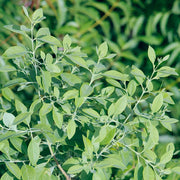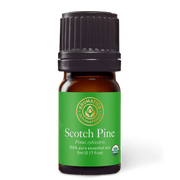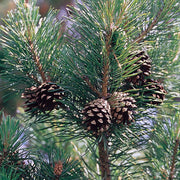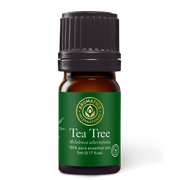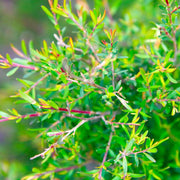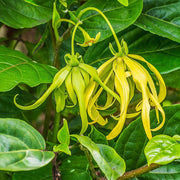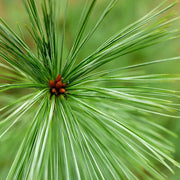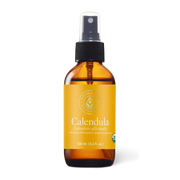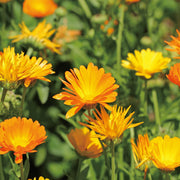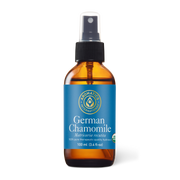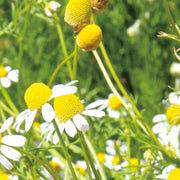You can use essential oils for kids in so many ways!
Essential oils offer support for emotional, mental, and physical issues. They also offer the reassurance that you have effective, natural solutions that help the children in your life.
However, it’s important to understand how to use essential oils SAFELY for children.
In this post, we’ll go over why essential oil safety is a bit different for children than for adults, and how to use essential oils safely and effectively for kids, with specific oils we trust for small and delicate systems. We’ll also tell you when we prefer NOT to use essential oils for kids (and what we like to use instead).
All of the information we’re about to share is based on science and research.
Ready to deepen your knowledge about this important topic?
How essential oils affect children differently than adults

Essential oils are natural plant substances. They’re also extremely potent. How potent?
- A single drop of rose essential oil is equivalent to 30–50 roses.
- It takes about 75 lemons to make one 15 ml bottle of lemon essential oil.
- Over 250 pounds of peppermint leaves go into crafting just 1 pound of peppermint essential oil.
- 1 drop of peppermint essential oil is equivalent to approximately 40 cups of herbal tea.
When you look at it in that context, it’s easy to understand why a single drop of essential oil has an exponentially greater effect than the plant by itself...and why essential oils should be used with respect.
If a single drop of essential oil can be so powerful for a fully grown adult system, imagine the effect it can have on a child, whose system is much smaller, more delicate, and more responsive.
Children under 10 years old are generally more responsive to chemical substances.
One reason is, their metabolisms are less efficient than adults’. Kids are also more susceptible to respiratory issues, like colds and flu, than adults, and their skin is very delicate.
Using essential oils for kids is a GREAT way to support their health naturally! But it does require understanding the ins-and-outs of safety.
That’s exactly what you’re about to learn!
Using essential oils for kids: 9 Safety basics
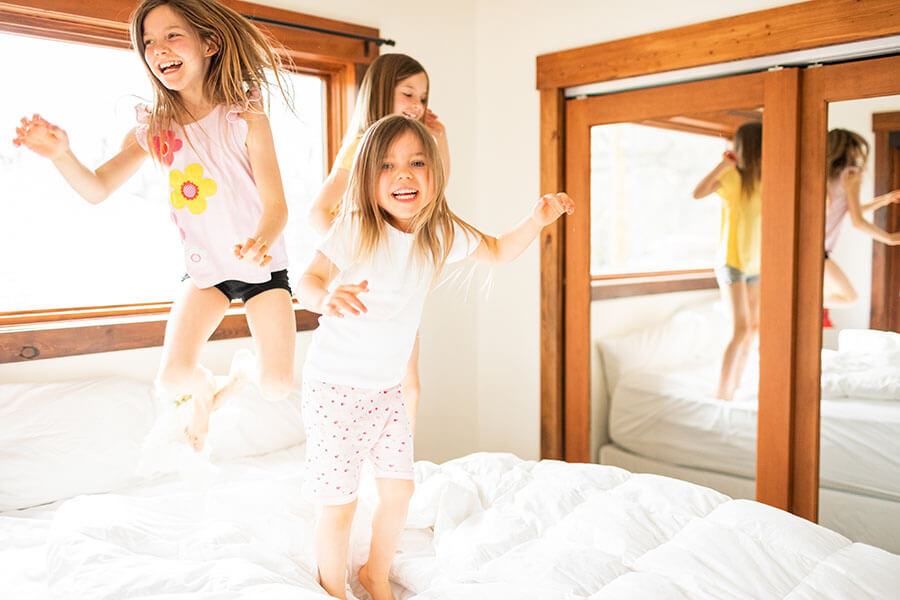
Here are a few of the biggest safety considerations we want to note right away.
1. We recommend using a 1% dilution: (That’s about 5 to 6 drops of essential oil in 1 oz/30 ml of carrier.)
2. Watch carefully for negative skin reactions: If the child has irritation where the oils have been applied, wash the area for 10–15 minutes with soap and water. Then use a carrier butter, cream, or coconut oil after the bath. If reactions are more severe, be sure and get immediate medical help.
3. For children under 5 years old and babies: We love diffusing kid-friendly essential oils at very low drop counts! For topical applications, we suggest using hydrosols instead of essential oils. (Keep reading to learn more about hydrosols.)
4. Oils to avoid for children under 10: Some oils contain natural components that can affect kids’ breathing. One such component is 1,8-cineole, found in:
- Various eucalyptus species: Eucalyptus globulus, Eucalyptus radiata, Eucalyptus smithii
- Saro Essential Oil (Cinnamosma fragrans)
- Ravintsara Essential Oil (Cinnamosma camphora ct. 1,8-cineole)
- Certain chemotypes of rosemary (Rosmarinus officinalis ct. 1,8-cineole)
- Certain chemotypes of niaouli (Melaleuca quinquenervia ct. 1,8-cineole)
5. Avoid using “hot” essential oils for children, such as:
- Cinnamon Essential Oil (Cinnamomum zeylanicum)
- Tulsi (Holy Basil) Essential Oil (Ocimum sanctum ct. eugenol)
- Clove Bud Essential Oil (Eugenia caryophyllata)
6. Other essential oils we recommend avoiding for kids:
- Wintergreen Essential Oil (Gaultheria fragrantissima)
- Birch Essentail Oil (Betula lenta)
- Hyssop Essential Oil (Hyssopus officinalis)
- Cornmint Essential Oil (Mentha arvensis)
- Cajeput Essential Oil (Melaleuca leucadendron var. cajuputi)
7. Avoid using Peppermint Essential Oil (Mentha × piperita) for children under 5: Especially near their faces, as menthol can cause breathing issues.
8. We don’t recommend ingesting essential oils: This especially goes for children! If the child accidentally swallows essential oil, do not induce vomiting. Call your poison control center right away. Keep bottles of essential oil out of reach of children.
9. Phototoxicity: Some essential oils cause sensitivity to sunlight. If they’re applied to the skin in topical blends, and then you go out into the sun, the area of application could experience negative reactions such as burning, blistering, discoloration, and irritation. This is important to remember since some kids spend a lot of time outside. Phototoxic essential oils include:
- Bergamot Essential Oil (Citrus bergamia)
- Grapefruit Essential Oil (Citrus paradisi)
- Lemon Essential Oil (Citrus limon)
- Lime Essential Oil (Citrus aurantifolia) - if it’s been cold-pressed.
Methods of using essential oils for kids
There are a few basic ways that we can get the benefits of essential oils.
We can apply them to skin in topical blends, or inhale them. Within those basics, there are different techniques and methods of use.
Let’s cover safe methods of using essential oils for kids!
- In a Diffuser – Diffusing essential oils is a great choice, especially for younger children. That said, always pay attention to the child’s reactions. If they react negatively to the scent of an essential oil, stop using that oil and try another.
- In an Inhaler – Small personal inhalers are easy for children to use. It’s empowering for them to keep something in their pocket, and use it whenever they want to feel better!
- In a Topical Blend – This is great for kids who are 5 and older! You can dilute essential oils in a lotion, cream, or carrier oil and apply it to the child’s skin. Some great natural carriers for kids are coconut oil, jojoba, shea butter, cocoa butter, avocado oil, and almond oil. You can even use aloe vera gel or hydrosol to make sprays, castile soap for hand or bath soap . . . and the list goes on!
Have fun getting creative with your kids!
Now that you know some safe, fun methods of using essential oils for kids, let’s talk about how much essential oil to use
Diluting essential oils for kids: Safe drop counts

Since their systems are more delicate and responsive, it makes sense to use a lower dilution of essential oils for kids.
We suggest sticking with a 1% dilution.
Since essential oils are so concentrated, even a gentle 1% dilution can have beautiful effects for children.
Here are some examples of a 1% dilution:
- Topical = 5–6 drops of essential oil per 1 oz (30 ml) of carrier oil, lotion, or cream
- Diffuser = 5–8 drops of essential oil in a diffuser filled with water
- Inhaler = 5–12 drops of essential oil on the cotton wick of a personal inhaler
When using essential oils for kids, less is more!
A little can go a long way. It makes sense to always try to achieve your intentions with as little essential oil as possible.
Essential oils for kids: Oils we love

Some essential oils are too strong for kids, such as those we shared above in the “Safety Basics” section.
- Bergamot Essential Oil (Citrus bergamia)
- Black Spruce Essential Oil (Picea mariana)
- Cedarwood Atlas Essential Oil (Cedrus atlantica)
- Cypress Essential Oil (Cupressus sempervirens)
- Douglas Fir Essential Oil (Pseudotsuga menziesii)
- Fragonia Essential Oil (Agonis fragrans)
- Frankincense Essential Oil (Boswellia carterii)
- German Chamomile Essential Oil (Nepal) (Matricaria recutita)
- Helichrysum Italicum Essential Oil (Croatia) (Helichrysum italicum)
- Juniper Berry Essential Oil (Juniperus communis)
- Lavender Essential Oil (Lavandula angustifolia)
- Lemon Essential Oil (Citrus limon)
- Lime Essential Oil (Citrus aurantifolia)
- Mandarin (Red) Essential Oil (Citrus reticulata)
- Roman Chamomile Essential Oil (Chamaemelum nobile)
- Rosalina Essential Oil (Melaleuca ericifolia)
- Sandalwood Essential Oil (Santalum album)
- Scotch Pine Essential Oil (Pinus sylvestris)
- Sweet Orange Essential Oil (Citrus sinensis)
- Tea Tree Essential Oil (Melaleuca alternifolia)
- Ylang Ylang (Complete) Essential Oil (Cananga odorata var Genuina)
- White Pine Essential Oil (Pinus strobus)
Want to narrow down the list?
See our Top 10 Essential Oils for Kids! You’ll learn why each of the 10 oils is helpful and how to use it safely for children.
Hydrosols: A safe alternative for kids
Earlier in this post, we mentioned we don’t always like to use essential oils for children, especially if they’re younger than 5 years old.
What do we do for them instead?
We like hydrosols!
Hydrosols are created when an aromatic plant is steam distilled. The water heated during distillation becomes infused with the plant’s therapeutic properties. This is the hydrosol!
Hydrosols offer nourishing, supportive benefits for us, and are much less concentrated than essential oils. Most hydrosols can be applied directly to the skin without dilution. They’re very soothing for common childhood issues like bumps, bruises, and scrapes. The aromas of some hydrosols can also help calm and balance children’s emotions.
Hydrosols are wonderful options for people with sensitive systems, including children and babies. We especially love:
- Lavender Hydrosol (Lavandula angustifolia)
- Calendula Hydrosol (Calendula officinalis)
- German Chamomile Hydrosol (Matricaria recutita)
Want to learn more about hydrosols? Start with our post, “All about hydrosols”
Essential oils are a great way to care for kids
And now you know some important info to help you use essential oils for kids safely.
If you have any questions at all, please reach out to us and ask! We have an incredible team at Aromatics International, with certified aromatherapists on staff to answer questions and concerns you might have: team@aromatics.com
Would you like some specific recipes to use essential oils for kids?
Check out 5 Ways essential oils help kids adjust to back to school You’ll get recipes to help kids adjust to new schedules, stay healthy, get great sleep, and more.
We created that post with back-to-school season in mind, but the recipes are effective all year round.
Enjoy!







